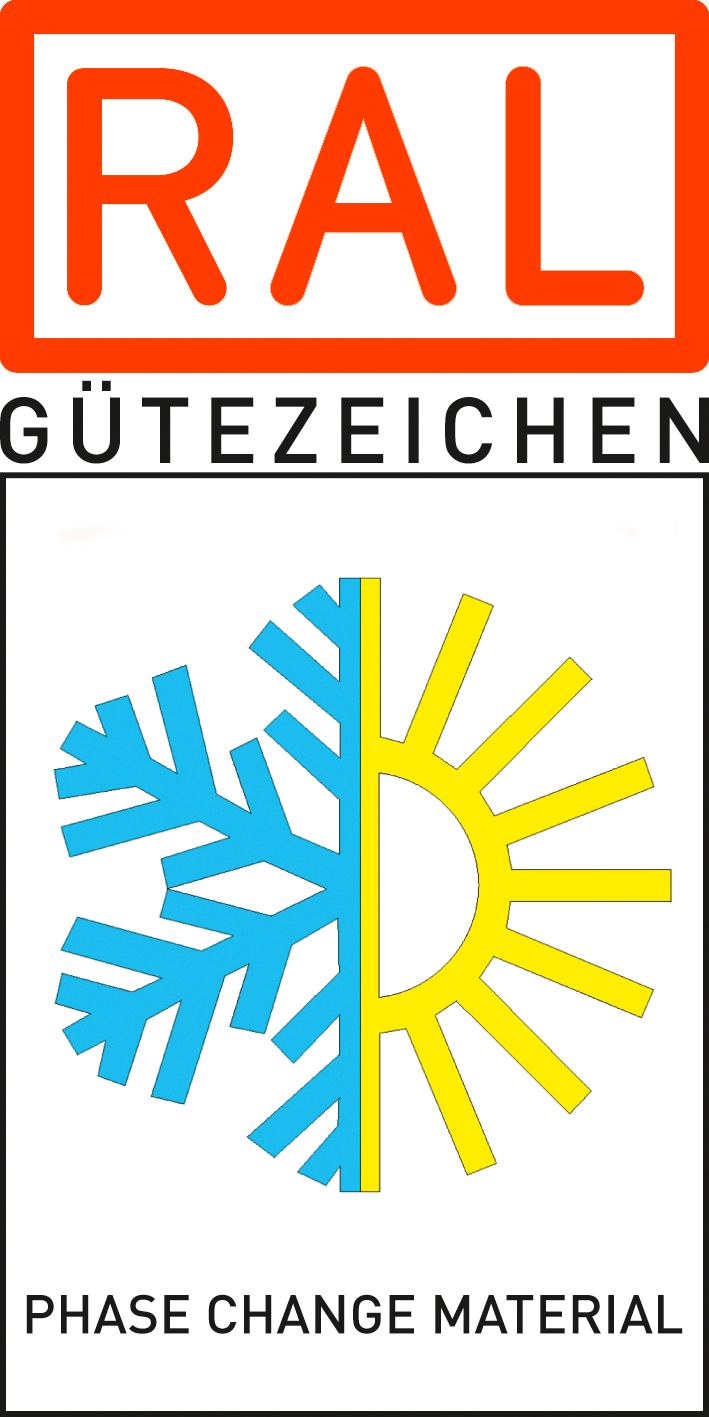What is PCM?
PCMs (phase change materials) are materials that can be technically used during their phase change by means of collecting their heat. Mostly, the solid-to-liquid phase change is used. For technical reasons, the solid-to-liquid phase change can be better achieved than the liquid-to-gas change. The former comprises also higher energy values rather than the solid-to-solid phase change.
The energy storage during phase change shows up higher energy values than the specific heat capacity during 'normal' heating of a given material. For that reason, there is an advantage with respect to the energy storage density, especially for small temperature differences. The specific heat which occurs during 'normal' heating is also called sensible heat and is associated with a temperature rise. This is not the case for latent (hidden) heat.

By heating up a PCM until the temperature range of its melting point has been reached, the absorbed heat is used for the phase change from solid to liquid. During this change the temperature remains constant. As soon as the PCM has fully changed its phase from solid to liquid and upon further heating, the temperature raises again, as expected. Upon freezing, the PCM solidifies at its freezing temperature and the energy (heat) that has been absorbed before for melting is now released. This can be explained by the fact that the liquid state has a higher energy state than the solid. Thus, there is more energy stored in the liquid which is fully dissipated during solidification. Rubitherm offers PCMs which react exclusively upon temperature variations. An activation by a switch like for e.g. hand warmers (heat pads) is not possible.  |
With the application of PCMs, e.g. in heat accumulators, heat or cold is possible to be abstracted from the surrounding medium and be stored. The released thermal energy can then be gained with a time-delay at a certain temperature. A huge variety of applications exist:
- Heat storage for air-conditioning
- Heat storage for heat peak load reduction
- Buffer storage for solar, solid fuel and waste heat applications
- Buffer storage for heating techniques
- Passive temperature regulation for transport
- ...
The advantage of PCM materials can be realized for small temperature variations (delta T).
The direct comparison with water at different temperature differences illustrates high storage density for small temperature variations.
Whenever it is needed, the PCM can be applied in all situations: for heat or cold storage, for an increase in the heat capacity of a system, for adjustment of temperature variations, for heat recovery and temperature stabilization ...
The selection of the PCM depends on the particular application.
The most important factors are:
- the temperature range of the application ~ melting point of the PCM
- the type of PCM (organic (RT) or inorganic (SP)), depending on the different properties
- the product class (pure PCM, encapsulated or bound), depending on the incorporation of the PCM
We would be glad to give to you an individual offer.
Copyright © 2024 Rubitherm Technologies GmbH - Imhoffweg 6 - 12307 Berlin




